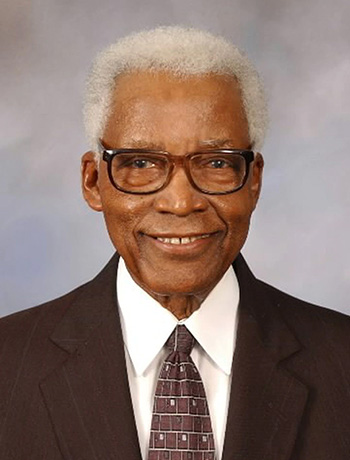
Extension History
The 1914 Smith-Lever Act is a federal law that established the national Cooperative Extension System at land-grant institutions. However, the Cooperative Extension program at Alabama A&M University (AAMU) was not formally established until December 1971, offering educational activities in five program areas. Upon establishment, Cooperative Extension became an official division of the University. Therefore, Extension employees on the AAMU campus are also employees of the University. Today, the Alabama Cooperative Extension System at AAMU is housed in the James I. Dawson Building, named after the first 1890 administrator.
Early Program Areas

Under the leadership of James I. Dawson, the Cooperative Extension program at AAMU served communities in 12 North Alabama counties. Programmatic activities covered agriculture and natural resources, home economics, 4-H and youth development, and community resource development. The Extension program served an estimated 100,000 people each year with a focus on disadvantaged and limited-resource audiences.
Major Accomplishments
Major accomplishments highlighted in the centennial report, A People and a Spirit Serving the Nations of the World (1990), included:
-
-
-
- Ala-Tenn Vegetable Marketing Cooperative that served vegetable and fruit producers in North Alabama and Central Tennessee. This project covered some 500 acres and yielded $5 million in sales over a five-year period.
- Small and Home-Based Business Development program served more than 100 small businesses that generated an annual income of more than $500,000.
- 4-H Summer Education and Youth Enrichment Program provided outreach to more than 3,100 youth ages 9 to 19. Youth participated in 4-H clubs and were involved in activities covering plant science, food and nutrition, clothing and textiles, animal science, and leadership and personal development.
- The Rural Revitalization Conference focused on developing strategies to serve rural communities and would later become the Urban-Rural Interface Conference. This conference, with more than a 20-year history, focused on issues that impacted rural and urban communities.
-
-
The Cooperative Extension program at AAMU would continue serving communities in North Alabama until it was restructured in 1995 by the federal court case Knight v. Alabama.
Knight v. Alabama
No other event in history would quite shape the Alabama Cooperative Extension System as we know it today more than the historical landmark case, Knight v. Alabama. Addressing pertinent issues in higher education, the court issued a remedial decree in 1995. With regard to Extension, the decree combined the Cooperative Extension programs at Auburn University and Alabama A&M as the Alabama Cooperative Extension System (ACES). This move included Tuskegee University as a cooperating partner to the System, but not a member. It was an historical decision for Extension because it was the first time that an 1862 and an 1890 land-grant Extension program were combined into one system.
Urban Extension
Auburn University has the task of primarily serving traditional rural audiences, while Alabama A&M University focuses on serving urban, new, and nontraditional audiences. However, it is not unusual to find both institutions serving rural, urban, and suburban communities.
Today, Alabama Extension at AAMU still primarily delivers Urban Extension programs and services. These audiences reside in and around nine Urban Centers spanning some 26 counties. The Urban Centers are located in Anniston/Gadsden, Birmingham, Decatur, Dothan, Florence, Huntsville, Mobile, Montgomery and Tuscaloosa.
Urban Extension is the national term used for Extension outreach in more densely populated areas as more and more people move into urban communities across America. Urban Extension programs at AAMU are delivered across eight focus areas. These areas include:
-
-
-
- Alabama 4-H and youth development
- animal sciences and forages
- community resource development
- consumer sciences and personal financial management
- family and child development
- forestry, wildlife and natural resources
- home grounds, gardens, and home pests
- human nutrition, diet and health
-
-
AAMU Extension Today
Collectively, the Alabama Cooperative Extension System serves 1.4 million people or 1 in 3 residents in Alabama. Alabama Extension at AAMU continues to evolve as audiences evolve. Like in the past, programs and services are designed to meet the needs of diverse populations. At the heart of these initiatives are communities who still rely on Extension to fulfill its land-grant mission of delivering relevant, research-based information across the state. This information is designed to empower people with solutions that improve their quality of life, particularly among limited-resource audiences.
Contact Us
P.O. Box 967
Normal, AL 35762
